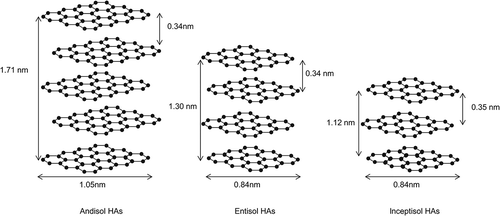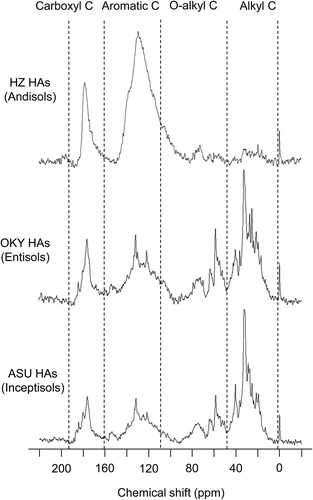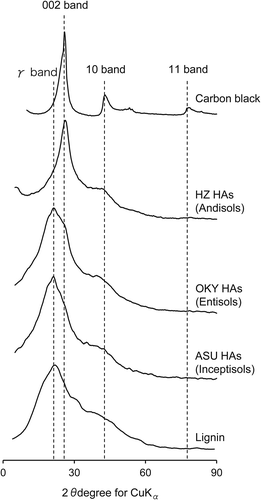Figures & data
Table 1 Characteristics of soil humic acids used in this study.
Table 2 Distribution of carbon (C) species and aromaticity estimated by carbon-13 (13C) nuclear magnetic resonance (NMR).
Figure 3 X-ray diffraction profiles of (a) HZ (Andisols), (b) OKY (Entisols), and (c) ASU (Inceptisols) humic acids after waveform separation.
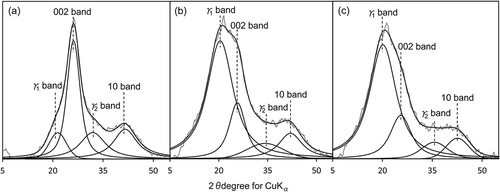
Table 3 Stacking structure properties of soil humic acids (HAs) estimated from the 002 band of the X-ray diffraction profile.
Figure 4 Relationships between mean stacked structure length along c axis (Lc) and proportion of aromatic carbon (C) (%), (alkyl C + O-alkyl C) (%), and degree of darkness (A600/C, where A600 is the absorbance at 600 nm and C is the organic C concentration in milligrams of C per milliliter).
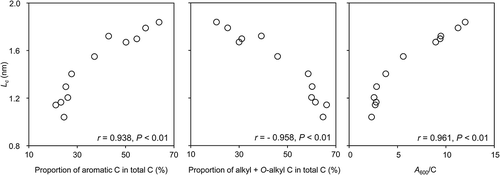
Figure 5 Proposed average stacking nanostructure models for humic acids (HAs) analyzed in the present study. These nanostructure models used theoretical values for the size of the condensed aromatic rings along the a axis La) and approximate value for the average number of C planes in the stacking nanostructure (Nc).
